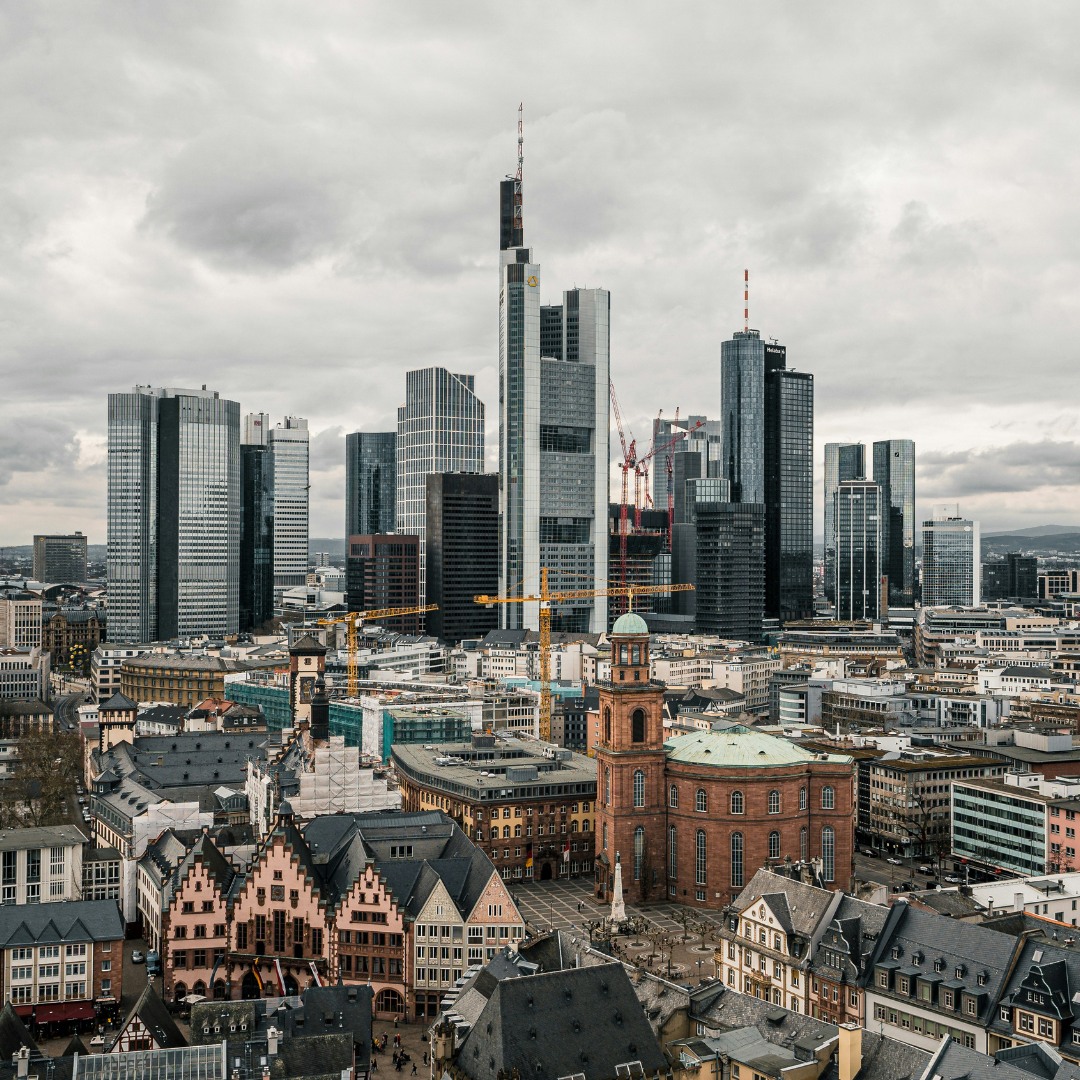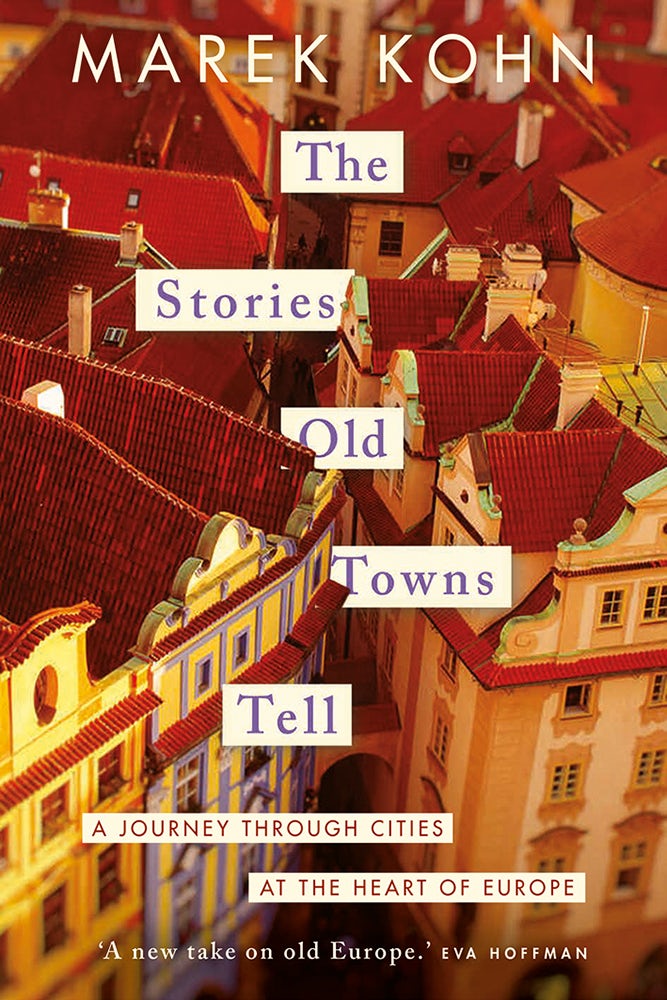A critical travelogue to Central Europe’s old towns
 Frankfurt skyline. Photo credit: Paul Fiedler on Unsplash
Frankfurt skyline. Photo credit: Paul Fiedler on Unsplash 
Published by: Yale University Press
 Frankfurt skyline. Photo credit: Paul Fiedler on Unsplash
Frankfurt skyline. Photo credit: Paul Fiedler on Unsplash The cursory reader might be worried when perusing the introduction to Marek Kohn’s book The Stories Old Towns Tell. The title intimates a somewhat Romantic impression. Repeated allusions to the Gothic aura of the continent’s old towns are reminiscent of a Byronesque Grand-Tour-travelogue with nuances of a Germanophilia à la Mark Twain. A focus on the experience of ice-licking tourists and the declaration that Europe’s old towns symbolize the triumph of peace do not help. Too superficial appears the picture. People who lived in old towns are immediately propelled to raise their hands, asking critical questions concerning the brutal gentrification of these tourist utopias and the harmful effects of mass tourism, not to mention the annoyance caused by drunk visitors roaming the streets at night. A focus on current politics circling Joe Biden and Vladimir Putin, as well as generalizing remarks on the destiny of Europe, harden the suspicion that this is a presentist depiction of the old towns’ history.
Architects, artists, café owners, city planners, criminals, hoteliers, kebab sellers, museum directors, priests, prostitutes, rebels, secret agents, soldiers, theater managers, and even golems are given a voice to offer their accounts of the old towns’ past.
Yet, nothing is further from the truth. Already in his first chapter, Kohn alleviates the fears of the reader by answering the questions and debunking the myths mentioned above. Instead of proposing old towns as objects of authenticity, the author uncovers their fabricated nature. His focus on the time of the Second World War and its aftermath is predicated on the incentive to show how these old towns are not as old as one might think, visualizing the politicized rebuilding process after their destruction. Kohn presents these historical locations not as finished places, completed a long time ago and now to be visited as open-air museums, but as dynamic spaces that were and are constantly de- and reconstructed, de- and reframed in the recent past and present. He endeavors to adumbrate the multitude of narratives circling the interpretation of old towns. Since these spaces are of high symbolic value in any urban landscape, creating identity and representing historical meaning, various actors fought over their ideological and physical occupation. It is their story that Kohn is trying – successfully – to tell. His old town is not a tourist’s paradise but a contested space in which co-existence has to be constantly renegotiated.
In the book, different personalities manage the old towns’ reconstruction with different ideologies and, consequently, different approaches to infrastructural and architectural design. Kohn used autobiographical documents and interviews to acquire a more personal insight. A major merit of his work rests in the transmission of witnesses’ testimonies in a translated, comprised, and summarized form. Instead of losing himself in the intricacies of the singular narrative, the reader can gain a better comprehension of the macro level through a juxtaposition of microhistorical tales. The author forgoes, at times, a more distanced position to immerse his readership in the personal worlds of the people who populate(d) Middle Europe’s old towns. Architects, artists, café owners, city planners, criminals, hoteliers, kebab sellers, museum directors, priests, prostitutes, rebels, secret agents, soldiers, theater managers, and even golems are given a voice to offer their accounts of the old towns’ past. Adapting to their specific narratives, Kohn’s book at times resembles an espionage thriller, a gruesome gothic tale, or a success story. The protagonists are from diverging ethnic, religious, and social origins. Their differences are mirrored in the ideologies that are displayed in Kohn’s text. Catholics, conservatives, communists, national socialists, liberals, Lithuanian separatists, and Polish nationalists take center stage. The author ingeniously demonstrates how the reorganization and reappropriation of the old town by its makers and inhabitants is imbued with their political worldview.
Criticizing a too indulgent romanticization (and marketization) of the old town as a multicultural hotspot, Kohn reminds us that it had always been and still is a place of conflict.
To impart a fuller picture of the general development, Kohn used a geographically disjointed structure. The chapters on the individual towns (Frankfurt am Main, Lublin, Prague, Rothenburg ob der Tauber, Vilnius, Warsaw, and Würzburg, as well as Hamburg, Krakow, Tallinn, and Wrocław/Breslau) are not ordered from north to south, nor from east to west. Instead, Kohn followed a thematic thread. His three major interests are the reconstruction of old towns after the war oscillating between conservation and modernism, the disappearance of the Jewish quarter, and the exchange of former inhabitants with others. Kohn used the book’s division into urban case studies to link the history of the diverse towns along these lines. Warsaw and Frankfurt were rebuilt in different ways, Prague and Lublin dealt with their Jewish past dissimilarly, and Wrocław/Breslau as well as Vilnius became the home of new inhabitants after the war. The author’s appraisal of the Jewish history is especially impressive. Criticizing a too indulgent romanticization (and marketization) of the old town as a multicultural hotspot, Kohn reminds us that it had always been and still is a place of conflict. Coincidently, it was his almost-namesake, the historian Mark Cohen, who made a similar point concerning the alleged harmony of Al-Andalus’s convivencia.
A question that remains concerns Kohn’s usage of the term Middle Europe, which he brandishes as an alternative to Central Europe or the imperialistically charged Mitteleuropa. Do problematic connotations disappear by exchanging the prefixed adjective or translating them? Especially from an Austrian perspective – I fear I cannot escape my upbringing – one wonders why the southern border of Middle Europe is northern Bavaria/Franconia. Did the Habsburg Monarchy not have a bigger importance, for example in places such as Krakow, Prague, and Wrocław/Breslau, than to be mentioned only twice? What about the old towns of current Austria, Hungary, and Slovakia? However, it has to be said that Kohn does not pretend to give an ontological history of Middle Europe’s old towns. His book is rather a critical travelogue of a scholar who is interested in the fabricated and modern nature of gothic facades and cobblestone streets. Instead of providing a self-contained story, the writer stresses that old towns are places overlaid with conflictive narratives and that their history has not ended but is constantly remade. This conclusion invites the reader to conduct further research on her or his own and to try on Kohn’s glasses of the traveling historian.
Paul Csillag studied History and European Ethnology at the universities of Innsbruck, Jean Jaurès (Toulouse), and Yeditepe (Istanbul). He achieved a master’s degree in both fields with papers on the reception of history in pop-cultural fiction. Currently, he is working on concepts of the Mediterranean as portrayed in nineteenth-century historical novels at the European University Institute in Florence. He taught courses on Historical Fiction Studies at the Universities of Firenze, Regensburg, Salzburg, and Sciences Po (Menton).

The Stories Old Towns Tell: A Journey through Cities at the Heart of Europe
Published by: Yale University Press
